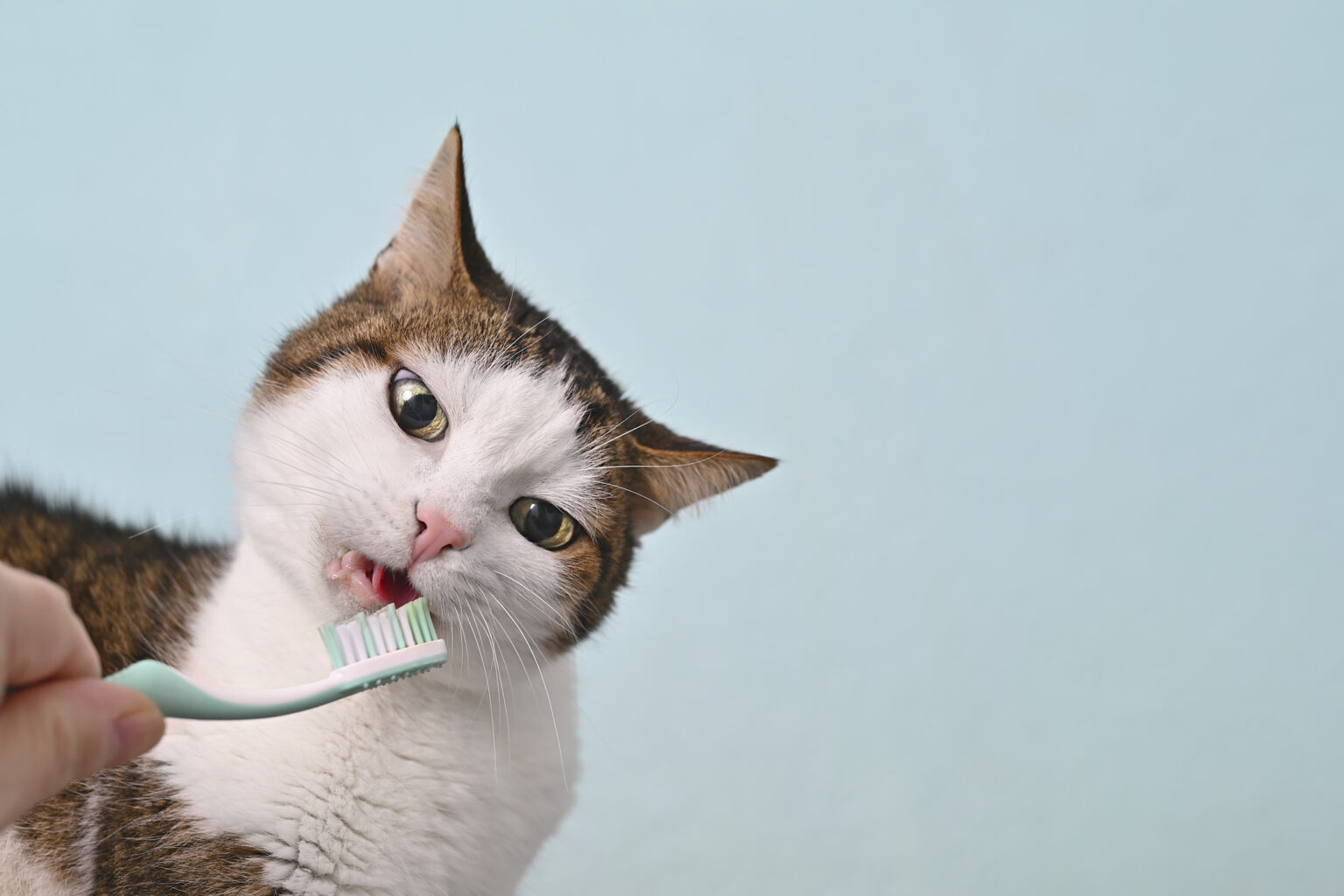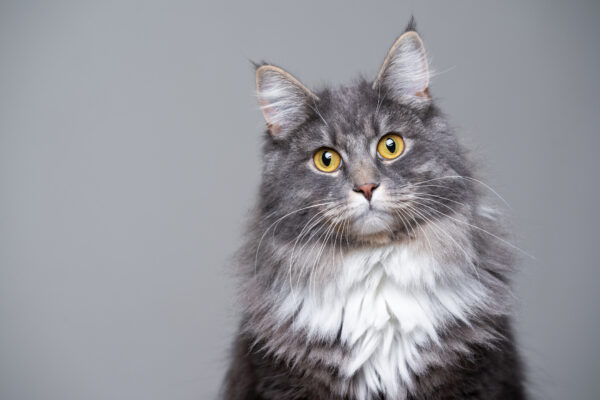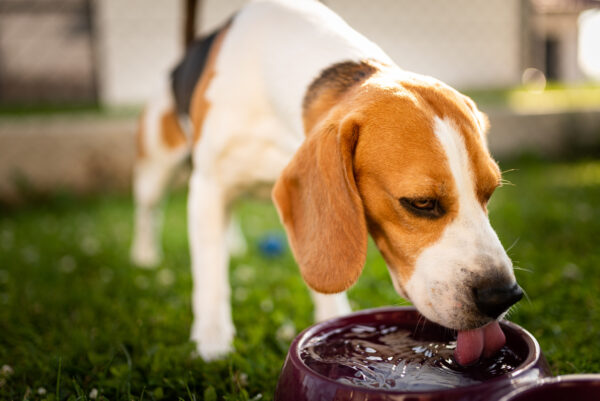What is periodontal disease?
Periodontal disease (or cat gum disease) is a disease of the tissues that surround and support the teeth. It causes changes that are associated with the inflammation and loss of the deep supporting structures of the cat’s teeth. ‘Periodontal’ is derived from ancient Greek and means ‘around the tooth.’ It is by far the most common oral condition suffered by cats. The effects are irreversible after a certain stage has been reached and therefore steps towards prevention must be taken.
How does periodontal disease develop?
The outer surface of the teeth is made of enamel, which is the hardest material in the body. In a kitten, this enamel is smooth. Every day the teeth become covered in bacterial plaque, but through chewing, the plaque is constantly wiped from the smooth enamel. How much remains will depend to some extent on the nature of the cat’s diet. Plaque is soft, but it rapidly hardens to produce a substance called calculus, or tartar. Unlike enamel, tartar is rough in texture and so plaque is more difficult to remove from it and will continue to build up.
The presence of bacteria in the plaque irritates the gum edges and causes them to become reddened and inflamed (gingivitis). As the gum grows increasingly inflamed, other bacteria start to cause further damage, and the gum may begin to recede around a tooth. Eventually, the attachments holding the tooth in place are weakened, and it may then become loose. The whole process can take several years to complete, but it is reversible in the early stages. Advanced periodontal disease is a painful condition and is likely to result in tooth loss if left untreated. An infected tooth may also act as a reservoir of infection, and any bacteria may find their way from the tooth – via the cat’s blood – to his heart, kidneys, liver, and lungs, where they may cause serious disease. In some cats, periodontal disease may lead to long-term gingivitis-stomatitis (inflammation of the gums and mouth).
How to Prevent gum disease in cats?
Periodontal disease is irreversible and therefore prevention is very important. It is important to familiarise your cat from a very young age (kitten age) to having her teeth cleaned and checked on a regular basis. A good dental care program should include:
- Regular visits to your veterinary surgeon, which include an oral exam
- Veterinary dental cleaning as advised
- Put in place a daily oral hygiene regime. Various products are available to help reduce plaque formation including; Vet Aquadent, Plaque Off and Logic Oral Hygiene Gel.
- Brushing the teeth is the most effective way of preventing plaque and tartar build-up. Use a cat-specific dental kit including cat toothbrush and toothpaste.
- Specially formulated dental diets (ask your vet for recommendations)
Hills Science Plan Feline Oral Chicken
- Specially designed kibble helps clean your cat’s teeth and stop plaque and tartar build-up
- By controlling tartar, you make your cat less likely to suffer from nasty tummy issues
- Top-quality protein is great for strong, healthy muscles
- Delicious ingredients mean your cat will always look forward to dinnertime
Royal Canin Oral Care Dry Adult Cat
- Suitable for cats over the age of one
- Minerals maintain a healthy urinary tract
- Support your pet’s oral health
- Kibble shape designed to ‘brush’ teeth as your cat crunches
- Contains a dental agent to trap calcium and prevent tartar
Royal Canin Vet Diet Feline Dental
- Contains nutrients which work to prevent the formation of tartar
- Protects against bad breath
- A blend of fibre makes it easier for hairs to pass through your cat’s system, preventing hairballs
- Works to dilute urine, decreasing the likelihood of urine stone formation
Hill’s Prescription Diet Feline t/d
- Specially shaped kibbles clean teeth
- Fights plaque
- Reduces bad breath
- Reduced protein and calcium limit plaque and tartar build-up
- Not recommended for cats with severe periodontal disease
What factors affect the development of periodontal disease?
Numerous factors play a role in the formation of plaque, tartar, and the development of periodontal disease. These include:
- Age and general health status – Periodontal disease more commonly affects older cats. Cats infected with feline leukaemia virus, FIV or calicivirus have a much higher incidence of periodontal disease.
- Diet and chewing behaviour – hard kibbles are slightly better than canned food at keeping plaque from accumulating on the teeth. There are specialist diets available that contain ingredients to help with dental health and claim to help keep plaque from forming.
- Breed, genetics, and tooth alignment – Oriental short-hair and Siamese cats are more commonly affected than other cats and evidence suggests genetics may play a role, because some purebred cats are predisposed to the condition.
- Grooming habits – Hair accumulation and impaction around the tooth can increase the development of tartar
- Home care – Regular brushing of your cat’s teeth can greatly reduce the accumulation of plaque and development of tartar, thus reducing the risk of periodontal disease.
What are the signs of periodontal disease?
As periodontal disease progresses, you may observe the following signs:
- Yellow deposits on the teeth
- Gums that bleed easily
- Red or swollen gums
- Persistent bad breath
- Pus around the tooth
- Sensitivity around the mouth
- Pawing at the face
- Loose or missing teeth
- Loss of appetite
- Stomach or intestinal upsets
- Drooling
- Difficulty chewing or eating
- Irritability or depression
- Teeth that are loose or missing
The most important thing to remember is that cats can hide symptoms of dental disease for months or even years. Often owners that did not realise their cats had dental disease cannot believe the change for the better that they see in their cats after a dental procedure is carried out. Therefore it is very important to have regular checks of the teeth by your veterinary surgeon.
How is periodontal disease diagnosed?
Your veterinarian will perform a visual examination of your cat’s mouth for signs of periodontal disease initially. If indicated, a dental procedure may be recommended. Dental procedures are not well tolerated by cats, and are almost always performed under a general anaesthetic. At this stage, the veterinary surgeon will use a periodontal probe to measure the crevice depth around each tooth. Full mouth x-rays may be recommended to determine the extent of the disease.
A number of criteria are used to assess the oral health of a cat and assign a grade. These include the amount and distribution of plaque and calculus, health of the gum, appearance on x-ray, and the depth of pockets.
| Grade | Plaque and Calculus | Gum Health | Radiologic Changes | Prognosis | |
| Early Gingivitis | Grade I | Mild amount of plaque
|
Mild redness | No change | Reversible |
| Advanced Gingivitis | Grade II | Subgingival plaque
|
Redness and edema (swelling at gumline) | Little change | Reversible |
| Early Periodontitis | Grade III | Larger amounts of subgingival calculus | Redness, edema, gums bleed with gentle probing, gum recession or hyperplasia | Subgingival calculus, 10-30% loss of bone support | Irreversible |
| Established Periodontitis | Grade IV | Larger amounts of subgingival calculus | Severe inflammation, gum recession, loose teeth and/or missing teeth, pus around gumline, gums bleed easily, deep pockets
|
Over 30% bone loss | Irreversible |
What veterinary procedures are used to treat periodontal disease?
Treatment depends upon the grade assigned to the severity of the problem. Grade I or Grade II: A routine professional prophylaxis (dental cleaning and polishing) will be performed on pets with Grade I or II disease. The plaque and tartar build-up will be removed from the teeth, both above and below the gum line. The teeth are then polished to remove microscopic scratches that predispose to plaque formation and calculus build-up. Each tooth and the entire oral cavity are checked for any disease. Fluoride may also be applied.
- Grade III and Grade IV: Treatment options, depending on the results of the probing and x-rays, include:
- Root planing: involves removing residual calculus and diseased cementum (bony tissue covering the root of a tooth) and smoothing the root surface.
- Subgingival curettage: removes diseased connective tissue.
- Periodontal debridement: can be performed instead of root planning and gingival curettage. In this procedure, irritants to the tooth and root surface such as bacteria are removed.
- Gingivectomy: excess gum tissue is removed as the area between this excess tissue and the tooth is a perfect habitat for bacteria.
- Periodontal surgery: These surgeries involve opening a flap of the gum over the root of the tooth to be able to reach the deeper structures.
- Tooth extraction: In some cases, a tooth cannot be saved or the owner elects not to have other procedures performed. In these cases, tooth extraction is the only alternative.
What types of aftercare is required?
Cats with Grade I or II disease will be placed on a regular brushing and dental care program to control plaque through the use of chemical (cat toothpaste) and mechanical removal (brushing with a cat toothbrush). The cat may also have a special prescription dental diet recommended.
Cats with Grade III or IV disease will need to be placed on several types of therapy. Owner commitment to this care is crucial.
Pain and anti-inflammatory medication: Medication for pain relief and to decrease the amount of inflammation may be administered post-operatively and for several weeks following the dental procedures.
Antibiotics: Antibiotic therapy may be needed.
Diet: Depending on the situation, it may be necessary to feed your cat only soft food for the week or so after treatment when her mouth will be tender. Your veterinarian may then suggest feeding your cat a specialised dry diet that helps control the build-up of plaque and tartar. There are also various supplements in powder form or as liquid to add to the drinking water.
Brushing: Your veterinarian will explain to you the best tooth brushing routine for your cat. You may need to wait until your cat’s mouth heals before starting to brush. Often you will start out with a soft finger brush for the first 2-3 months and then graduate to a bristle brush.
Regular check-ups: Cats with periodontal disease will need frequent check-ups to assess their oral health. For some animals, it may be advisable to recheck pocket depth 4-6 weeks after treatment. For others, routine examinations 2-4 times a year will be needed.



